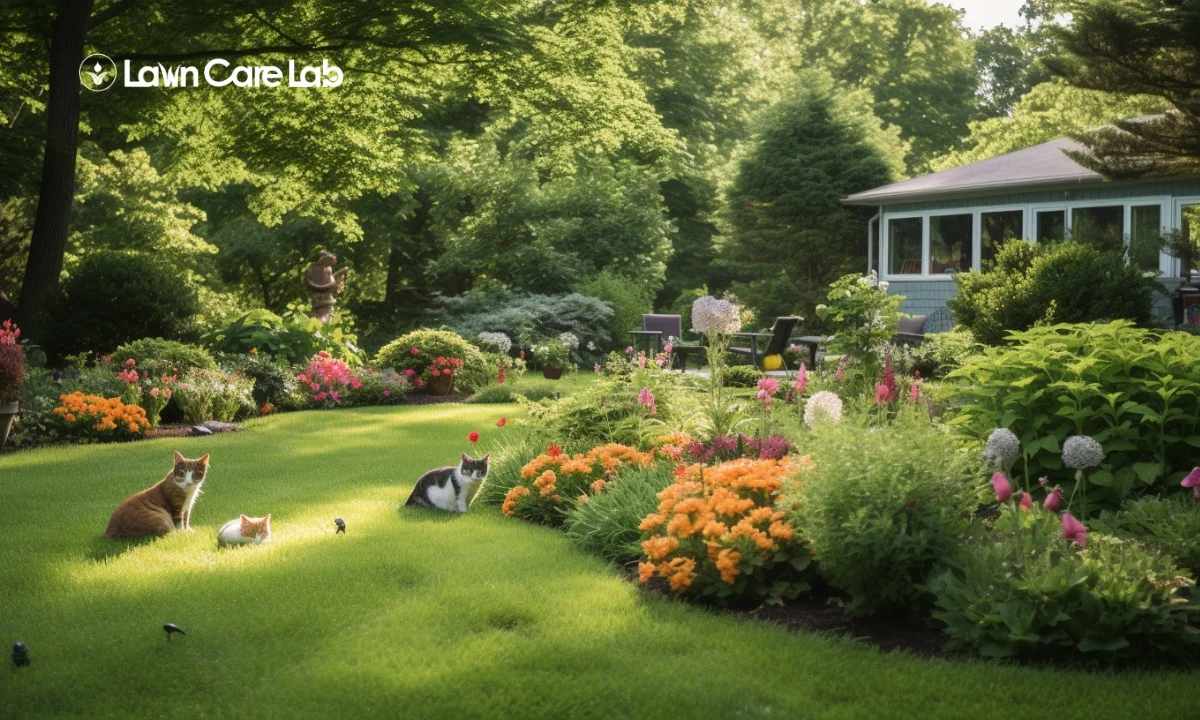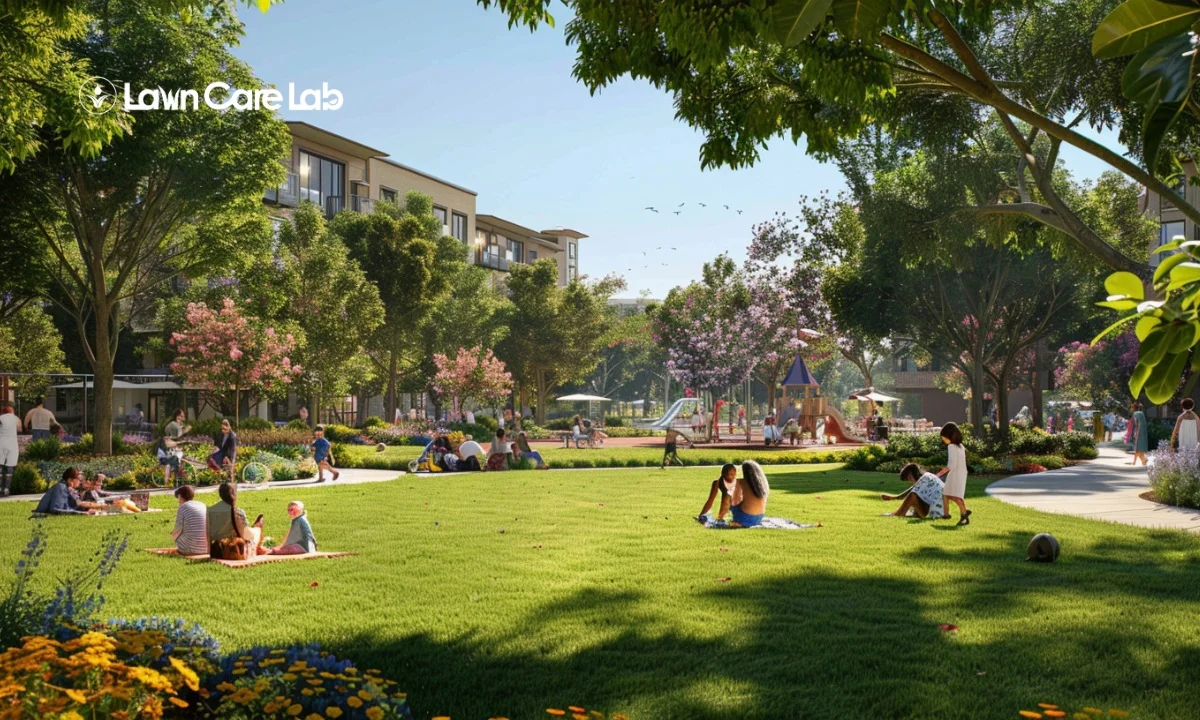Get ready to make your backyard a paradise for birds, butterflies, and blossoming flowers. You’re on the verge of creating an eco-friendly haven. By opting for native plants, developing natural habitats, and providing clean water, your yard will morph into a wildlife sanctuary.
It’s time to ditch the harmful chemicals and embrace nature’s beauty. So, are you set to welcome wildlife into your garden? You’re about to create a hot spot for local fauna and flora.
It’s time to foster an environmentally aware, Wildlife-Friendly lawn!
Table of Contents
Choose Native Plants That Attract Local Wildlife
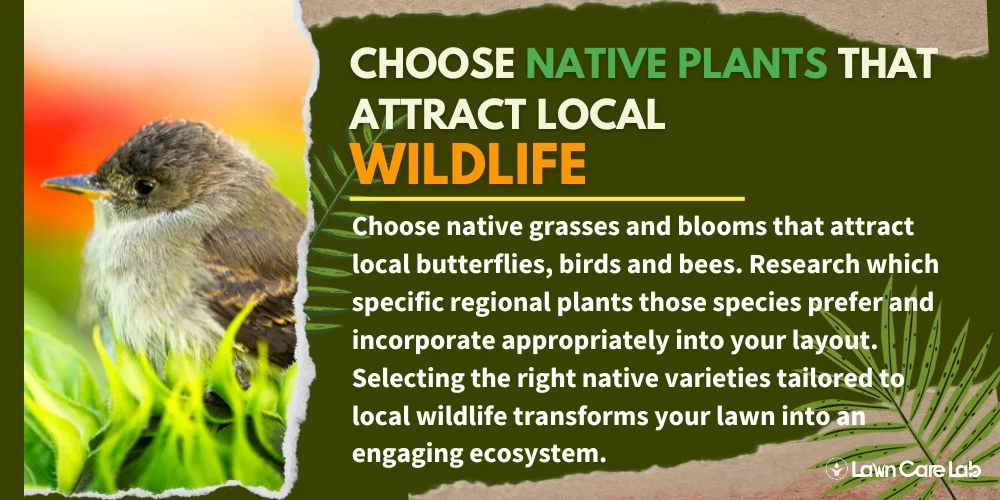
Selecting appropriate local plants can transform your yard into a hub of wildlife activity.
Begin by opting for grasses and blooms that draw in the local butterflies, birds, and bees.
Extend your efforts by understanding the plant preferences of your area’s wildlife species and incorporate those into your garden layout.
Select Grasses and Flowers for Butterflies, Birds, and Bees
A mix of local grasses, flowers, and shrubs in your yard will attract more wildlife. Use plants like milkweeds and blazing stars to support the thriving of butterflies.
Designing a bird-friendly yard and planting the right flowers can help local birds and bees thrive and enhance the ecosystem.
Creating habitats for a wide variety of wildlife is the next step. It’s about digging in and discovering which plants your local wildlife prefers.
Research Regional Plant Preferences
Attract local wildlife to your backyard by planting native plants that they love. Use research techniques to find the perfect combo of fruits, seeds, and nectar.
Experts from universities, wildlife organizations, and conservation groups can guide your plant selection for a yard that’s visually appealing, promotes biodiversity, and supports diverse wildlife.
Provide Natural Food Sources
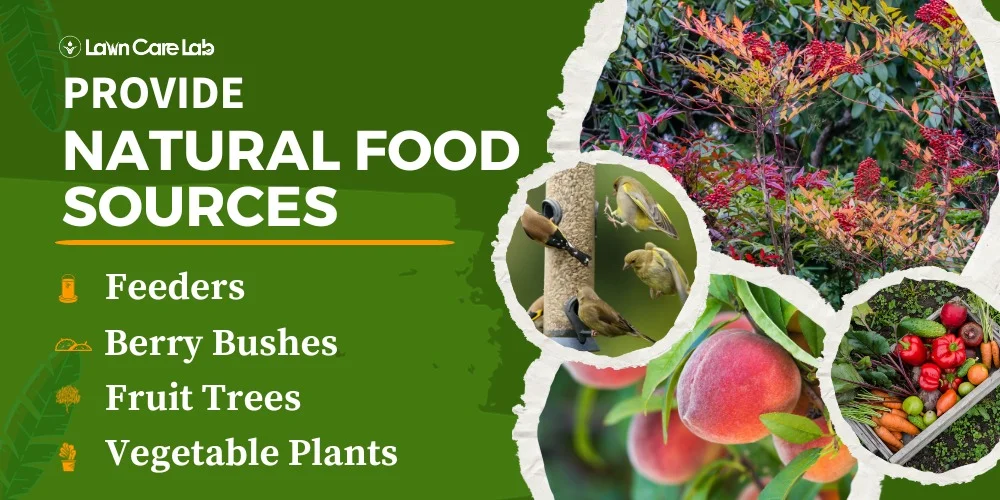
You’re on the brink of transforming your garden into a welcoming habitat for wildlife.
By incorporating feeders, bushes producing berries, trees bearing fruits, and a variety of vegetable plants, you’ll attract a range of animals.
Plus, you’ll be providing them with nourishment, promoting longer stays.
Add Feeders, Berry Bushes, Fruit Trees, and Vegetable Plants
Here’s a quick guide to get you started that attracts diverse species, boosts biodiversity, and promotes wildlife preservation:
- Feeders (like ones with suet, nuts, and seeds) for birds and squirrels.
- Berry Bushes (think holly, blueberry, raspberry) for small mammals and birds.
- Fruit Trees (such as apples, pears, and peaches) attract birds, deer, and small mammals.
- Vegetable Plants (lettuce, carrots, beans come to mind) for insects, birds, and small mammals.
Create Shelter and Nesting Areas
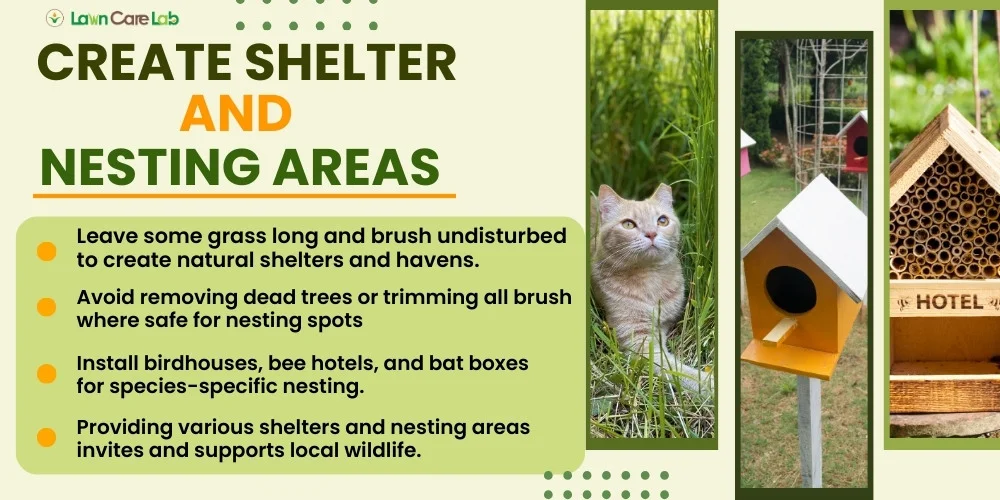
How about turning your garden into a haven for wildlife?
Just let some grass and brush grow wild, creating a cozy, natural hideaway for critters.
You can even jazz up the place with birdhouses, bee hotels, and bat boxes.
Not only do these add a rustic charm to your yard, but they also offer essential habitats for these animals.
Leave Uncut Grass and Brush Sections
Letting parts of your lawn grow and leaving brush undisturbed creates a welcoming habitat for local wildlife, promoting eco-friendly gardening and wildlife preservation.
Here’s what you can do:
Firstly, let a portion of your lawn grow wild. Even a tiny uncut area can serve as a haven for various creatures.
Secondly, try not to remove dead trees if it’s safe to do so, as they make great nesting spots.
Lastly, refrain from trimming all the brush as it offers essential shelter for small wildlife.
Doing so will invite nature’s charm into your garden and contribute significantly to wildlife conservation.
Install Birdhouses, Bee Hotels, and Bat Boxes
Add birdhouses, bee hotels, and bat boxes to your yard to attract pollinators and provide nesting spots while spicing up your outdoor space.
For example, insect hotels and bat boxes promote biodiversity and support your local ecosystem from your backyard. Keep an eye on them to prevent non-native species from moving in.
Now, let’s dive into how to provide fresh water for wildlife to drink and bathe – a critical part of a wildlife-friendly yard.
Supply Fresh Water for Drinking and Bathing
Get ready to turn your garden into a sanctuary for wildlife by offering clean water for them to drink and bathe.
Incorporating a tiny pond, birdbath, or other water element can boost your backyard into a dynamic, breathing habitat.
Add a Small Pond, Birdbath, or Water Feature
Adding a small water feature, like a pond or birdbath, to your backyard not only enhances its appeal but also provides a source of clean drinking and bathing water for local wildlife. It’s a simple yet effective way to transform your outdoor space.
Consider constructing a DIY pond – it’s an enjoyable and satisfying task. Just ensure it’s not more than 18′ deep and has gently sloping edges for diverse species.
Installing a birdbath around 2-3′ deep and adding a dripper or fountain can attract more birds. Clean it regularly and choose the right water plants to keep it attractive.
Practice Natural Lawn Care Methods
Opting for natural lawn care methods creates a safer environment for wildlife and reduces harsh chemical release into ecosystems.
Plus, allowing the clippings to mulch and decreasing the frequency of mowing can result in a rich and welcoming habitat for a variety of species.
Avoid Pesticides, Let Clippings Mulch, Limit Mowing
If you want your lawn to flourish while being kind to nature, you can do a few key things.
First, ditch the pesticides and use natural methods to deal with pests instead.
Secondly, let your lawn clippings break down naturally – it’s like a free, natural fertilizer.
Lastly, Mow less often to create a wildlife-friendly environment.
Practicing organic lawn care and incorporating native plants can create an eco-friendly, wildlife-friendly lawn.
Enjoy Your Wildlife-Friendly Lawn
Once your backyard is all set up to be a wildlife-friendly lawn, you’re in for a real treat. It’s like having an all-access pass to a non-stop nature show.
As you’ve worked hard to attract pollinators, you’ll see bees, butterflies, and other insects buzzing about, playing their part in the circle of life. You’ll be mesmerized by the sight of vibrant butterflies making themselves at home.
You’ll also have the opportunity to go birdwatching and listen to the melodies of different species. By creating wildlife habitats, you’ll be increasing biodiversity and witnessing nature in action.
FAQs on Wildlife-Friendly Lawn
What Are Some Common Mistakes to Avoid While Creating a Wildlife-Friendly Lawn?
Can I Create a Wildlife-Friendly Lawn in an Urban Environment?
Are There Any Legal Restrictions I Should Be Aware of Before Creating a Wildlife-Friendly Lawn?
How Can I Keep My Wildlife-Friendly Lawn Safe for Children and Pets?
How Do I Maintain a Wildlife-Friendly Lawn During Different Seasons?
- How to Create a Lawn Care Schedule for Southern Climates - October 30, 2024
- How to Use Compost Tea to Boost Lawn Growth and Soil Health - October 23, 2024
- The Best Grasses for Saltwater-Exposed Lawns: Coastal Lawn Care - October 17, 2024

